
A collaboration by Mike Wakefield, Dan O'Neil, and Mark Piroso on smoking, the benefits of quitting, and the risks of no behavior change, as well as an application to the Health Belief Model.

A collaboration by Mike Wakefield, Dan O'Neil, and Mark Piroso on smoking, the benefits of quitting, and the risks of no behavior change, as well as an application to the Health Belief Model.
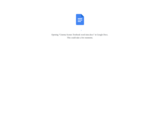
Cinema scenes film textbook.
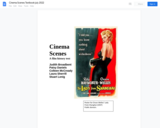
revised edition of film history text july 2022
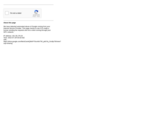
film history text pdf version july 2022
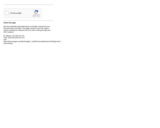
film textbook
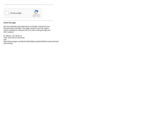
film textbook
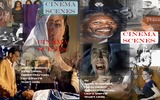
a recent revision of the film text
the revised text has altered margins deemed more helpful for printing the text....
fourth Amazon revision for printing
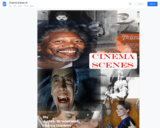
a textbook on the history of film
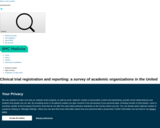
Many clinical trials conducted by academic organizations are not published, or are not published completely. Following the US Food and Drug Administration Amendments Act of 2007, “The Final Rule” (compliance date April 18, 2017) and a National Institutes of Health policy clarified and expanded trial registration and results reporting requirements. We sought to identify policies, procedures, and resources to support trial registration and reporting at academic organizations. Methods We conducted an online survey from November 21, 2016 to March 1, 2017, before organizations were expected to comply with The Final Rule. We included active Protocol Registration and Results System (PRS) accounts classified by ClinicalTrials.gov as a “University/Organization” in the USA. PRS administrators manage information on ClinicalTrials.gov. We invited one PRS administrator to complete the survey for each organization account, which was the unit of analysis. Results Eligible organization accounts (N = 783) included 47,701 records (e.g., studies) in August 2016. Participating organizations (366/783; 47%) included 40,351/47,701 (85%) records. Compared with other organizations, Clinical and Translational Science Award (CTSA) holders, cancer centers, and large organizations were more likely to participate. A minority of accounts have a registration (156/366; 43%) or results reporting policy (129/366; 35%). Of those with policies, 15/156 (11%) and 49/156 (35%) reported that trials must be registered before institutional review board approval is granted or before beginning enrollment, respectively. Few organizations use computer software to monitor compliance (68/366; 19%). One organization had penalized an investigator for non-compliance. Among the 287/366 (78%) accounts reporting that they allocate staff to fulfill ClinicalTrials.gov registration and reporting requirements, the median number of full-time equivalent staff is 0.08 (interquartile range = 0.02–0.25). Because of non-response and social desirability, this could be a “best case” scenario. Conclusions Before the compliance date for The Final Rule, some academic organizations had policies and resources that facilitate clinical trial registration and reporting. Most organizations appear to be unprepared to meet the new requirements. Organizations could enact the following: adopt policies that require trial registration and reporting, allocate resources (e.g., staff, software) to support registration and reporting, and ensure there are consequences for investigators who do not follow standards for clinical research.
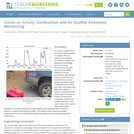
As a class, students use a low-cost air quality monitor (a rentable “Pod”) to measure the emissions from different vehicles. By applying the knowledge about combustion chemistry that they gain during the pre-activity reading (or lecture presentation, alternatively), students predict how the emissions from various vehicles will differ in terms of pollutants (CO2, VOCs and NO2), and explain why. After data collection, students examine the time series plots as a class—a chance to interpret the results and compare them to their predictions. Short online videos and a current event article help to highlight the real-world necessity of understanding and improving vehicle emissions. Numerous student handouts are provided. The activity content may be presented independently of its unit and without using an air quality monitor by analyzing provided sample data.
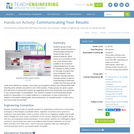
Students groups create scientific research posters to professionally present the results of their AQ-IQ research projects, which serves as a conclusion to the unit. (This activity is also suitable to be conducted independently from its unit—for students to make posters for any type of project they have completed.) First, students critically examine example posters to gain an understanding of what they contain and how they can be made most effective for viewers. Then they are prompted to analyze and interpret their data, including what statistics and plots to use in their posters. Finally, groups are given a guide that aids them in making their posters by suggesting all the key components one would find in any research paper or presentation. This activity is suitable for presenting final project posters to classmates or to a wider audience in a symposium or expo environment. In addition to the poster-making guide, three worksheets, six example posters, a rubric and a post-unit survey are provided.
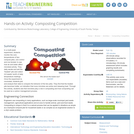
In a multi-week experiment, students monitor the core temperatures of two compost piles, one control and one tended, to see how air and water affect microbial activity. They daily aerate and wet the "treated" pile and collect 4-6 weeks' worth of daily temperature readings. Once the experiment is concluded, students plot and analyze their data to compare the behavior of the two piles. They find that the treated pile becomes hotter, an indication that more microbes are active and releasing heat. Through this activity, students see that microbes play a role in composting and how composting can be used as a carbon management process.
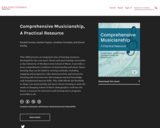
This OER presents an integrated suite of learning resources developed for the core music theory and musicianship curriculum at the University of Northern Iowa School of Music. It provides a more comprehensive symbiosis of musicianship and music theory learning than can be found in existing textbooks, including engaging and progressive video demonstrations and interactive listening and vocal exercises that integrate musical knowledge with foundational musical skills. This OER affords the flexibility to shape core musicianship and music theory learning to meet the needs of changing School of Music demographics well into the future, a resource for innovative and inviting music programs accessible to all.
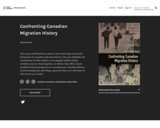
Short Description:
The essays published here speak to the broad range of research being done in Canadian migration history; they also highlight the commitment of their authors to an engaged, public-facing scholarly practice. Read together, we believe they offer a much-needed historical perspective on contemporary Canadian debates around immigration and refuge, questions that cut to the heart of who we are as a society.
Long Description:
Confronting Canadian Migration History means two things. First, engaging with the history of population movements into, through, and from this territory, and their importance for our history as a multiethnic settler society. This has been one of the central projects of migration historians in Canada in recent decades. Second, to make and maintain a place for that historical knowledge in contemporary discussions of migration, and in doing so confront the present with the past. That latter goal is at the heart of this collection, which assembles in one volume fifteen texts published on ActiveHistory.ca over the last four years.
Word Count: 25644
ISBN: 978-1-9990201-3-2
(Note: This resource's metadata has been created automatically by reformatting and/or combining the information that the author initially provided as part of a bulk import process.)
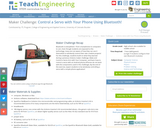
Bluetooth is everywhere—from smartphones to computers to cars. Even though students are exposed to this technology, many are not aware of how they can use it themselves to wirelessly control their own creative projects! For this challenge, students build on what they learned during a previous Arduino maker challenge, Make and Control a Servo Arm with Your Computer, and learn how to control a servo with an Android phone (iPhones do not work with the components used in this challenge). By the end of the exercise, expect students to be wirelessly controlling a servo with a simple phone application!
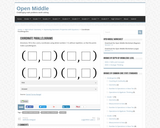
Open middle problems require a higher depth of knowledge than most problems that assess procedural and conceptual understanding. They support the Common Core State Standards and provide students with opportunities for discussing their thinking.
The Coordinate Parallelograms problem asks students to use the digits 1-9 to create 4 points that make up the vertices of a parallelogram.
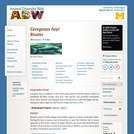
Coregonus hoyi: Information
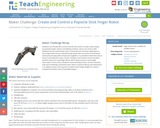
Students are introduced to servos and the flex sensor as they create simple, one-jointed, finger robots controlled by Arduino. Servos are motors with feedback and are extensively used in industrial and consumer applications—from large industrial car-manufacturing robots that use servos to hold heavy metal and precisely weld components together, to prosthetic hands that rely on servos to provide fine motor control. Students use Arduino microcontrollers and flex sensors to read finger flexes, which they process to send angle information to the servos. Students create working circuits; use the constrain, map and smoothing commands; learn what is meant by library and abstraction in a coding context; and may even combine team finger designs to create a complete prosthetic hand of bendable fingers.

This professional development will lead a team of math teachers through a goal-setting process where they first identify their current reality, then set goals for improvement, identify barriers, and finish with generating solutions.

This professional development will lead a team of math teachers through a goal-setting process where they first identify their current reality, then set goals for improvement, identify barriers, and finish with generating solutions.